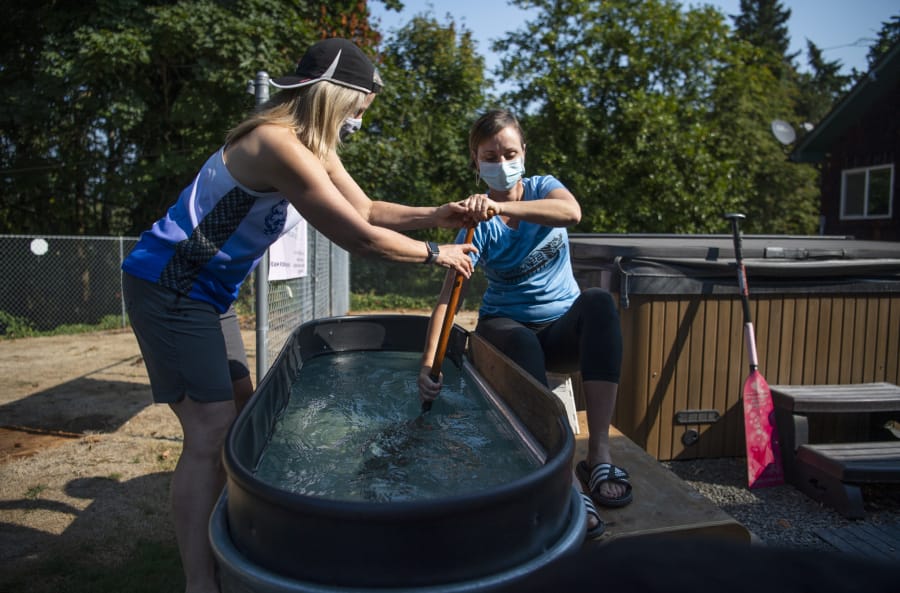“You should try dragon boating.” That’s what Britten Witherspoon, 43, kept hearing from other members of her support group for young breast cancer survivors.
Witherspoon wanted to be active again, but even after months of physical therapy, she couldn’t do the pushups and other exercises she used to.
“Chemo was hard on my heart and lungs,” Witherspoon said. Surgeries to remove and reconstruct her breasts limited her range of motion.
With two kids, Witherspoon couldn’t see herself making the commute from her Camas home to Portland for practices with the dragon boat team there.
Then the Pink Lemonade Project, a Vancouver-based nonprofit supporting those affected by breast cancer, put her in touch with Catch-22, a Clark County dragon boat team. She joined right away — even though the coronavirus pandemic kept the team from climbing into a boat together to practice on Vancouver Lake this summer.
Witherspoon has managed to dip a paddle in the water, however, thanks to Laura Thornquist, who coaches the group of breast cancer survivors who compete as part of Catch-22.
At her Woodland home, Thornquist set up a livestock watering tank with a platform alongside to mimic the experience of paddling a dragon boat. She runs small groups of teammates through exercise routines in her yard, and then coaches them on form using the tank.
During the pandemic stay-home orders, team members have stayed engaged through a fitness challenge in which they earn points for exercise, eating fruits and vegetables and abstaining from sweets.
The team is also raising money to travel to a competition in New Zealand in 2022. Thornquist said Catch-22’s breast cancer survivor contingent now has 17 members, just shy of the 22 required to fill out a boat for competition. (Twenty paddle, one at the helm steers and one at the bow calls the strokes.)
Breast cancer survivors have turned to dragon boating as a sport ever since an experiment almost 25 years ago found it to be beneficial not only for their health but also for their social well-being.
The prevailing wisdom used to be that repetitive upper-body movements would cause lymphedema, a swelling of extremities commonly caused by removal of lymph nodes as part of cancer treatment.
Dr. Don McKenzie, a Canadian sports medicine physician and exercise physiologist, decided to test this assumption. In 1996, he created a dragon boat team of women who had been treated for breast cancer.
His research found that padding actually reduces lymphedema. Thanks to his work, dragon boating for breast cancer survivors became an international phenomenon.
Vancouver resident Paula Zellers, 79, was one of the early beneficiaries. She underwent treatment for breast cancer in 1998. Zellers began paddling 21 years ago when she joined Pink Phoenix, a dragon boat team of breast cancer survivors in Portland. She switched to Catch-22, closer to home, about five years ago, she said.
“Breast cancer tears you down to ground zero,” Zellers said. “This builds you back up.”
Thornquist joined Catch-22 in 2016, about eight years after her diagnosis.
“I didn’t want to do breast cancer all the time. This was my escape,” said Thornquist, 56. “But I wanted to be there for those who needed it.”
So she began building a Catch-22 sub-team of breast cancer survivors.
“When you finish your treatment, you think, ‘What’s next?’ This gives you that ‘what’s next,’ ” Thornquist said. “It gives you a community.”




